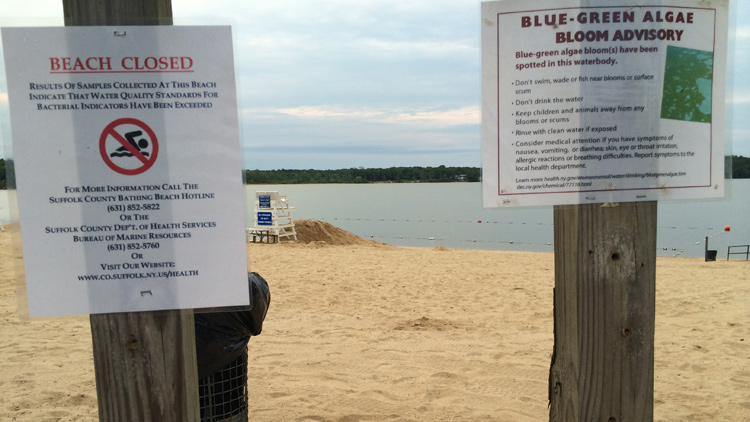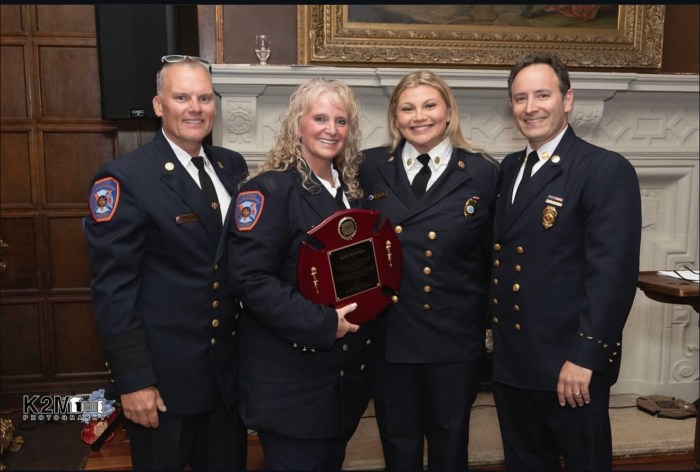The summers when 20th century celebrities such as Greta Garbo and Jackie Gleason frequented the beach resorts that hugged the shores of Lake Ronkonkoma are long gone. Now the pavilions have vanished, the shores are contaminated with trash, and the polluted water often poses a health threat. Twice in July swimming was banned because of high levels of bacteria.
Considering its present condition, it’s hard to imagine that Lake Ronkonkoma ever drew thousands of people. Today it’s earned a reputation as a symbol of environmental neglect because an assortment of municipalities are either unwilling or unable to cut through the bureaucratic tangle of red tape that surrounds Long Island’s largest freshwater body.
The policy failures resonate far beyond its shores. Between historic poor land-use decisions that placed unsewered homes around the lake leeching nitrogen into the water and unresolved municipal hand-wringing over how to best address the area’s economic blight, its ongoing plight serves as a microcosm of LI’s larger regional challenges.
Thanks to the Island’s many layers of governance and a distinct lack of coordination among them, our environment suffers. Our wastewater woes continue unabated, traffic congestion goes unaddressed, and unwise development choices continue. Fragmentation is the enemy of regional cohesion and planning.
Recently Suffolk County Legis. Leslie Kennedy (R-Nesconset), whose legislative district includes Lake Ronkonkoma, explained the complex situation to CBS reporter Jennifer McLogan.
“The bottom of the lake is owned by the Town of Islip, and some of the shore,” Kennedy said. “The Town of Smithtown has a small portion, the Town of Brookhaven has a portion, and the County of Suffolk has a portion.”
This municipal mix has led to inaction—a concept all too familiar to Long Islanders—when it comes to dealing with the debris and pollution that plague the lake.
After featuring Lake Ronkonkoma in her upbeat historic retrospective, News 12 Long Island’s Danielle Campbell learned first-hand how the once charmed area of her youth had suffered after years of neglect.
“My grandparents lived a block from the lake for more than 30 years,” Campbell recently told the Press. “I always knew the lake was in trouble. When I saw the burnt-out book store crumbling down into the lake’s shoreline, I knew something had to change.”
Last September, the Book House, a book shop dating back to the early 1920s, burned to the ground after being shuttered for almost a decade. Its charred rubble spread from the shoreline into the water. According to Campbell, the county finally intends to address the issue this fall. But the question remains: Why did it take so long?
To Campbell, Lake Ronkonkoma occupies the intersection of public funding and bureaucratic indifference.
“Unfortunately, Lake Ronkonkoma is under the jurisdiction of four municipalities,” Campbell said. “Because of this, [the] responsibilities, goals and vision for the lake and its surrounding area are fragmented and unclear.”
As a result, this mostly working-class area has been neglected for far too long.
“It is hard to imagine other Suffolk County waterfront communities such as Stony Brook or Brightwaters facing a similar fate of dumped trash, piles of construction debris, broken glass, hypodermic needles and a water quality that at most times is deemed toxic,” she noted.
She may be onto something. The Setauket Mill Pond in Frank Melville Park was choked and clogged with invasive weeds until a dedicated effort got underway that involved the park’s trust foundation, local residents, the local civic organization, New York State Department of Environmental Conservation and the Town of Brookhaven. Together, they took concrete steps to forge a plan and address the issue.
Meanwhile, Lake Ronkonkoma remains dirty and its beaches are strewn with litter. But this is a problem with a long history. Its water quality began deteriorating after World War II, when residences without sewers started multiplying around its shore.
Since all lakes and streams on Long Island are fed by groundwater, Lake Ronkonkoma’s low water table has caused trouble for its homeowners, whose houses shouldn’t have been built there in the first place—a fact that residents and their realtors still seem to be largely unaware of. It’s led to headaches for those who had to fill their basements with cement to prevent flooding and to leaky cesspools discharging nitrogen into the lake. Local woes have grown while official responses have stagnated.
In fact, the most actively involved branch of government in Lake Ronkonkoma seems to be the Suffolk Health Department, which is constantly banning swimming due to elevated bacteria levels after every heavy rainfall. A quick search on Google shows just how badly the water quality degrades after these runoffs.
According to Campbell, an inter-municipal task force formed four years ago to address the lake’s woes, but they never met once. But change could finally be coming. Only recently, after residents came together and formed called the Lake Ronkonkoma Improvement Group, did this task force schedule a meeting for September.
The flurry of activity and publicity is welcome. Meanwhile, the DEC must join with Suffolk County to curb the runoff that chokes the lake with bacteria and curb the nitrogen loadings, and the lake’s municipal partners must coordinate their efforts to clean up the debris and improve the area’s quality of life.
Lake Ronkonkoma will never replace the Hamptons. But if our local governments can’t clean up a two-mile long lakefront, how can we trust them to protect our drinking water or preserve our open space?
Rich Murdocco writes about Long Island’s land use and real estate development issues. He received his Master’s in Public Policy at Stony Brook University, where he studied regional planning under Dr. Lee Koppelman, Long Island’s esteemed master planner. More of his views can be found on TheFoggiestIdea.org or follow him on Twitter @TheFoggiestIdea.




































